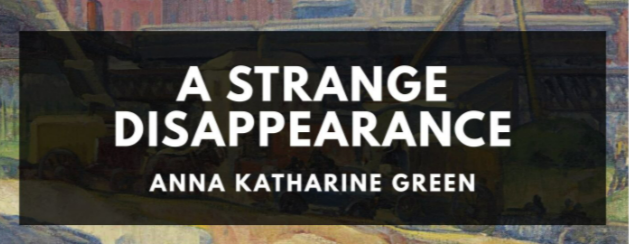CHAPTER XV — A Strange Disappearance
byCHAPTER XV – A Strange Disappearance turns inward toward a calculated exchange of theories, where observation becomes as crucial as action. The focus narrows to a private yet strategic conversation between Mr. Gryce and the narrator—one driven not by emotion, but by logic and anticipation. Together, they dissect the likely behavior of the Schoenmakers, whose decision-making is shaped by a need to conceal both themselves and their valuable captive. The meeting is less about immediate rescue and more about constructing a framework that explains how criminals with much to lose might choose to disappear. Every assumption is grounded in the behavior of people under pressure. It becomes clear that success depends not just on evidence, but on the ability to think like those being hunted.
Mr. Gryce’s initial suggestion is grounded in standard police procedure—investigate familiar circles first. He recommends probing the German district, relying on potential cooperation from figures like Schmidt or Rosenthal. However, the narrator quickly contests the idea, citing the community’s tendency toward gossip as a liability for anyone hiding a woman of noticeable appearance. His reasoning is sound: the Schoenmakers are too clever to risk visibility among people who watch their neighbors closely. This insight shifts the discussion from what seems obvious to what feels strategically invisible. Mrs. Blake, young and refined, would stand out too much. Her presence would draw questions before the day was through. It’s not distrust of the community—it’s understanding how quickly curiosity becomes a threat.
With ethnic enclaves like the Irish or French districts dismissed for similar reasons, the conversation deepens. The narrator reframes Mrs. Blake not as a mere captive, but as the core of a long-term scheme. Her silence and safety are crucial to the Schoenmakers’ extortion plot. Like a stolen heirloom, she must be kept undamaged and hidden until the time is right. The implication is chilling: her life is not only in danger, it’s calculated into a larger strategy. The kidnappers’ goal isn’t simply escape—it’s negotiation, and every delay may carry value. Thus, their hiding spot would be chosen with extreme care, balancing the need for secrecy with access to essentials. The stakes feel heavier now, not because of violence, but because of what might come if she remains missing too long.
Attention then pivots to outlying locations—places away from urban scrutiny, where isolation offers natural protection. Hoboken, a growing industrial town just across the river, is mentioned as a viable place to investigate. Yet it too has drawbacks. In a town bustling with laborers and new arrivals, strangers do not pass unnoticed. Remote farmhouses are suggested, though the need for proximity to transportation and supplies complicates the logic. The captors cannot vanish into thin air; they need food, safety, and silence. The narrator raises these contradictions with clarity, showing how every option presents both advantage and risk. It is not just about location—it is about behavior. People on the run have to adapt constantly, and the Schoenmakers, for all their menace, are not reckless.
Mr. Gryce listens carefully, not quick to dismiss or accept, but weighing each observation. His final thought is concise but powerful—whatever location the Schoenmakers have chosen, it must allow them to remain unseen while keeping their captive healthy and controllable. This is not a luxury, but a necessity. A sick or frightened woman draws attention; a well-cared-for one buys them time. The plan, as it stands, will depend not only on street patrols or witnesses, but on reading habits, pressure points, and predicting moments of weakness. It’s a manhunt that requires intellect more than weapons. Gryce’s approach is methodical, bordering on clinical, but the urgency beneath his calm exterior is unmistakable.
The chapter’s value lies in how it shifts the genre’s rhythm. There’s no direct conflict, no sudden discovery—only ideas layered upon deduction. Yet this conversation plants seeds for the action to follow. Readers witness how real detective work unfolds: not through miraculous insight, but through argument, rejection, refinement, and reason. It’s a psychological chess match played out in dialogue, and every move is meant to trap an opponent who cannot be seen. The absence of noise only amplifies the danger. And in this silence, the reader begins to understand that even a trace can be enough—if you know where to look.

